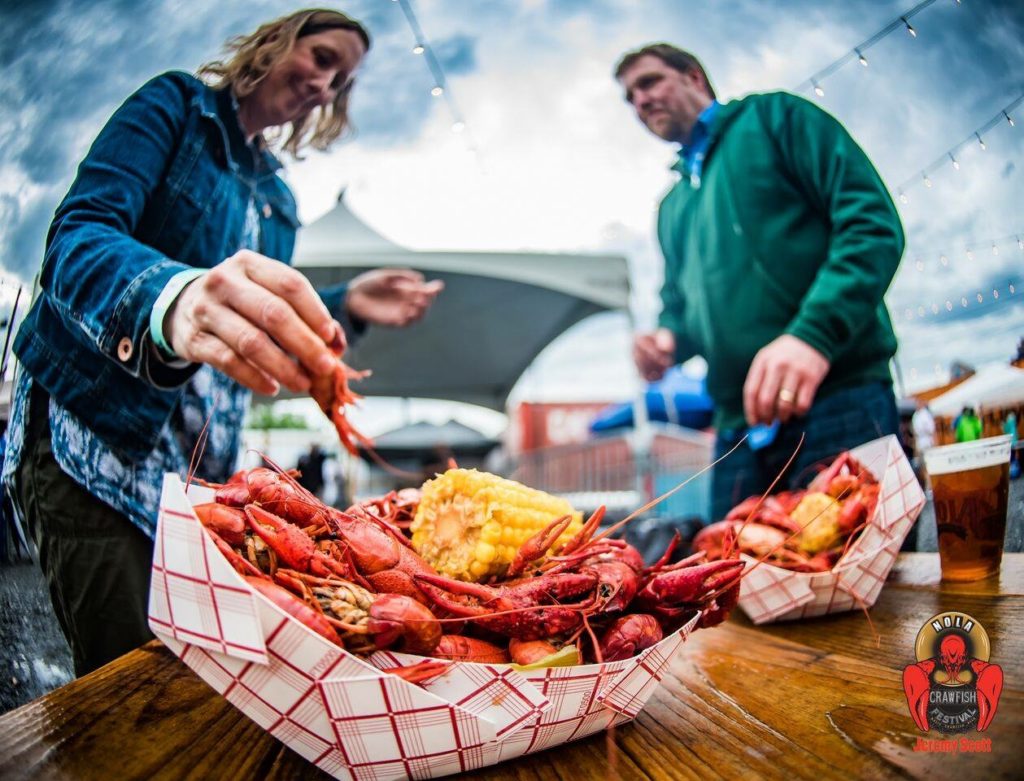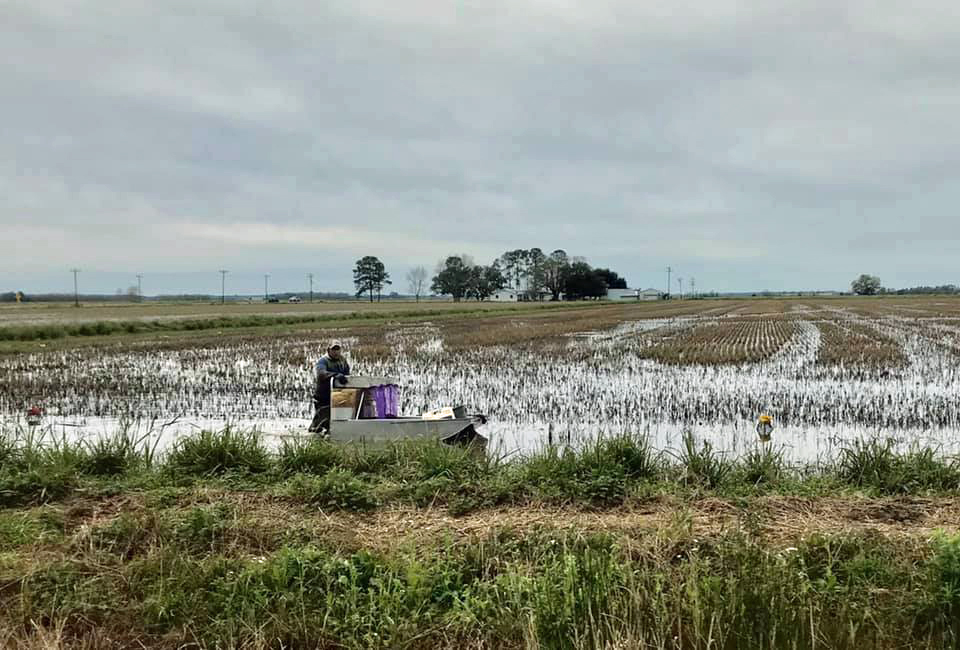In New Orleans and much of the South, crawfish is more than just a delicacy; it is a worshiped food group of its own, and one that residents mark on their calendars as its season. For many families in Louisiana and the surrounding areas, it serves as the centerpiece of family gatherings, graduation celebrations, and holidays like Mardi Gras. During these times, you can smell the crawfish boiling in practically everyone’s backyard. However, it wasn’t until the 1960s that crawfish was considered a delicacy. Prior to that, it was widely recognized as “poor man’s food,” and for many, it served little purpose other than bait for fishing. It was very abundant in the bayou region, where many poorer Cajuns lived in the 19th and 20th centuries, making it a popular dish among slaves and other economically disadvantaged individuals in these areas. In comparison to more cosmopolitan areas like New Orleans, the bayou was economically and geographically isolated.

Festival goers enjoying Crawfish. Photo: NOLA Crawfish Fest
It is surprising to think that a dish regarded so highly in today’s world could have been entirely disregarded by so many, especially when crawfish have been eaten in the region for so many years. As Joel Cavaness, an accomplished Cajun cook and descendant of the original Acadians, the first Cajuns, explains, “We grew up in the bayou eating only what we could grow, catch, or shoot and cook in one big pot. We ate what was in season, which could mean that we ate crawfish daily for weeks.” Some folks who had caught and enjoyed crawfish their whole lives simply did not talk about it in public. Since crawfish was considered a “poor man’s food” by so many, people avoided discussing it for fear they would be labeled by society. However, there were a few events in the mid-20th century in Louisiana that put crawfish on the map and on people’s plates.
In 1960, the first Crawfish Festival held in Breaux Bridge, Louisiana, which led to the city being named the “Crawfish Capital of The World,” was one of these events. After the festival, crawfish became more popular in Louisiana and the surrounding areas, and it began to be incorporated into various dishes at restaurants. A journalist who spoke to a friend who had grown up in Houma, LA, recalls a time when “crawfish were 5 cents per pound. When the price rose to 25 cents per pound in 1960, he figured that was the end of crawfish sales forever.” However, the popularity of crawfish continued to increase. Crawfish had officially become recognized as a legitimate cuisine, one that didn’t cause those who ate it to be scrutinized. As a food group that was eaten by the original settlers in the Louisiana area, crawfish represents a very important cultural heritage to many Cajuns. So, it’s nice to see the mudbugs finally get the recognition they deserve. Another event that helped boost the popularity of crawfish was the election of the first Cajun governor of Louisiana, Edwin Edwards, in 1972, whose slogan “Cajun Power!” was often accompanied by a clenched fist gripping a crawfish. By 1983, the crawfish was designated as the Louisiana state crustacean.

Crawfish Farming
Nowadays, many restaurants rely on crawfish as a product to drive their sales. In fact, when there are shortages in crawfish, many restaurants struggle to meet demand, and it has a lasting effect. In 2014, cold weather caused a shortage in crawfish, and J&J Seafood in Gretna, LA, just across the river from New Orleans, stated that their supplier was making deliveries only twice a week, compared to the daily shipments they had come to expect by that time in February. The owner had “been telling customers, ‘If you want crawfish, just call me before you come, and I’ll tell you if we got ’em.'” Another individual involved in the culinary world in New Orleans, Kenan Buchert, manager of Kjean Seafood in Mid-City, explained that “crawfish translates into business” for them. These restaurants have become very dependent on the supply of crawfish, and in the case of a shortage, many struggle to maintain their business. These little crustaceans have truly come to be worshipped in Louisiana, but the love of crawfish has also spread all over the United States. Even in the Northeast, a Boston restaurant, Bootleg Special, is entirely New Orleans-themed and serves Cajun classics, with one popular dish being their crawfish boil. In an article about the restaurant in the Boston Globe, the writer details an experience where she sees a server eye new arrivals with pristine shirts: “you need a bib. And you need a bib,” he told them. “Respect the crawfish!”
Today, many rice farmers grow crawfish alongside their rice crops because the demand for them is so high that farming crawfish is now required to meet consumer needs. It happens that the muddy ponds where rice is grown are the perfect environment for crawfish. Roughly 90% of all crawfish coming from Louisiana are farmed, creating an industry that generates $120 million a year. Crawfish represent far more than just “poor man’s food,” but instead a culinary heritage that had gone unrecognized for hundreds of years. Now, crawfish have become synonymous with Louisiana cooking. From the lowest to the highest ranks in society, crawfish have been scrutinized and worshipped. I wonder if we’ve ever stopped to consider them.
 NOLAbeings
Multimedia artist Claire Bangser created NOLAbeings as a portrait-based story project that marries...
NOLAbeings
Multimedia artist Claire Bangser created NOLAbeings as a portrait-based story project that marries...
 Data corner: Adobe Suite (create a PDF, social media graphic, presentation, edit a photo and video
Data corner is where you go to work with analytics and top tech skills. It takes on everything from PERL and SQL to Canva and Sprout Social.
Data corner: Adobe Suite (create a PDF, social media graphic, presentation, edit a photo and video
Data corner is where you go to work with analytics and top tech skills. It takes on everything from PERL and SQL to Canva and Sprout Social.

[…] Source […]